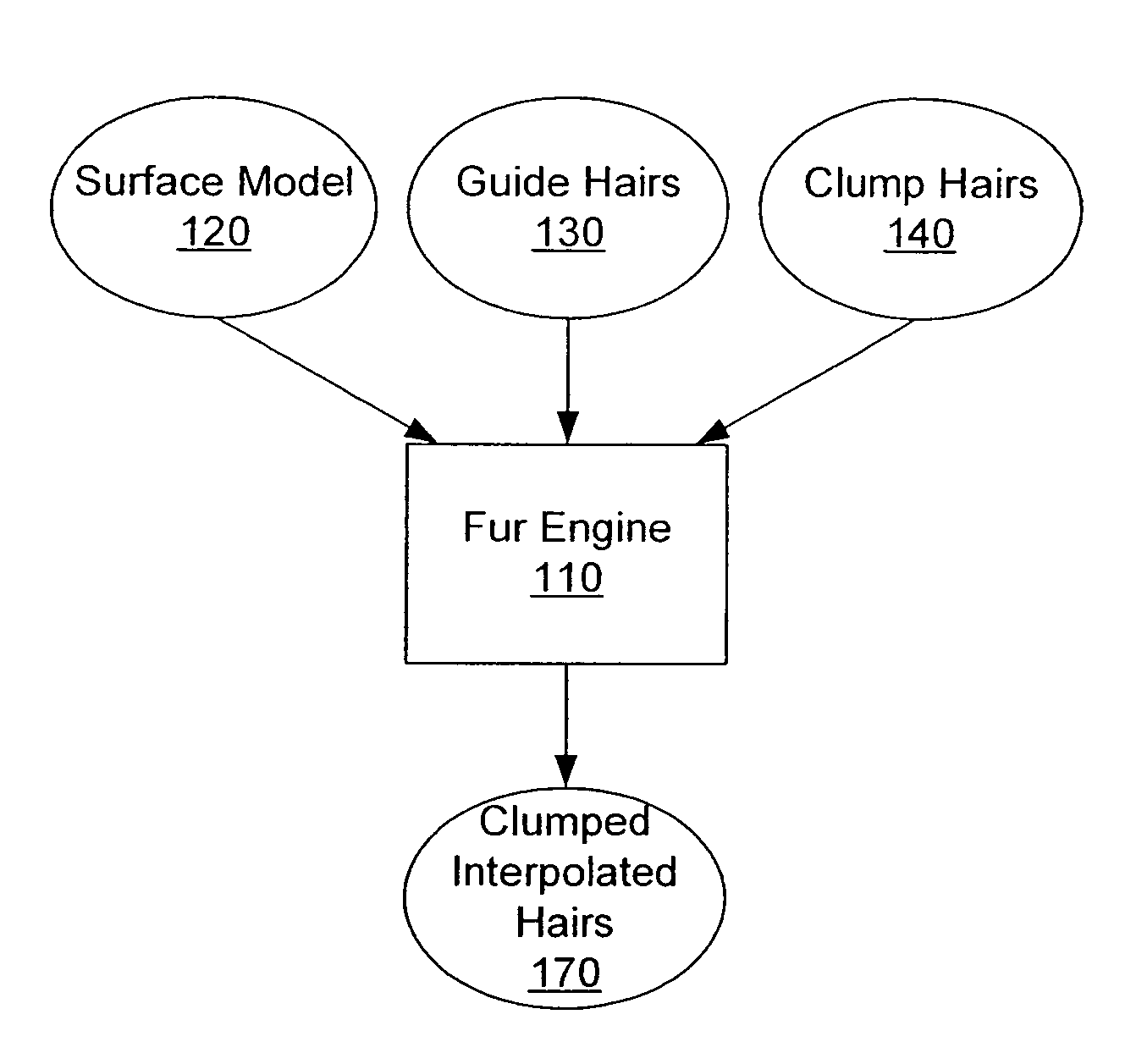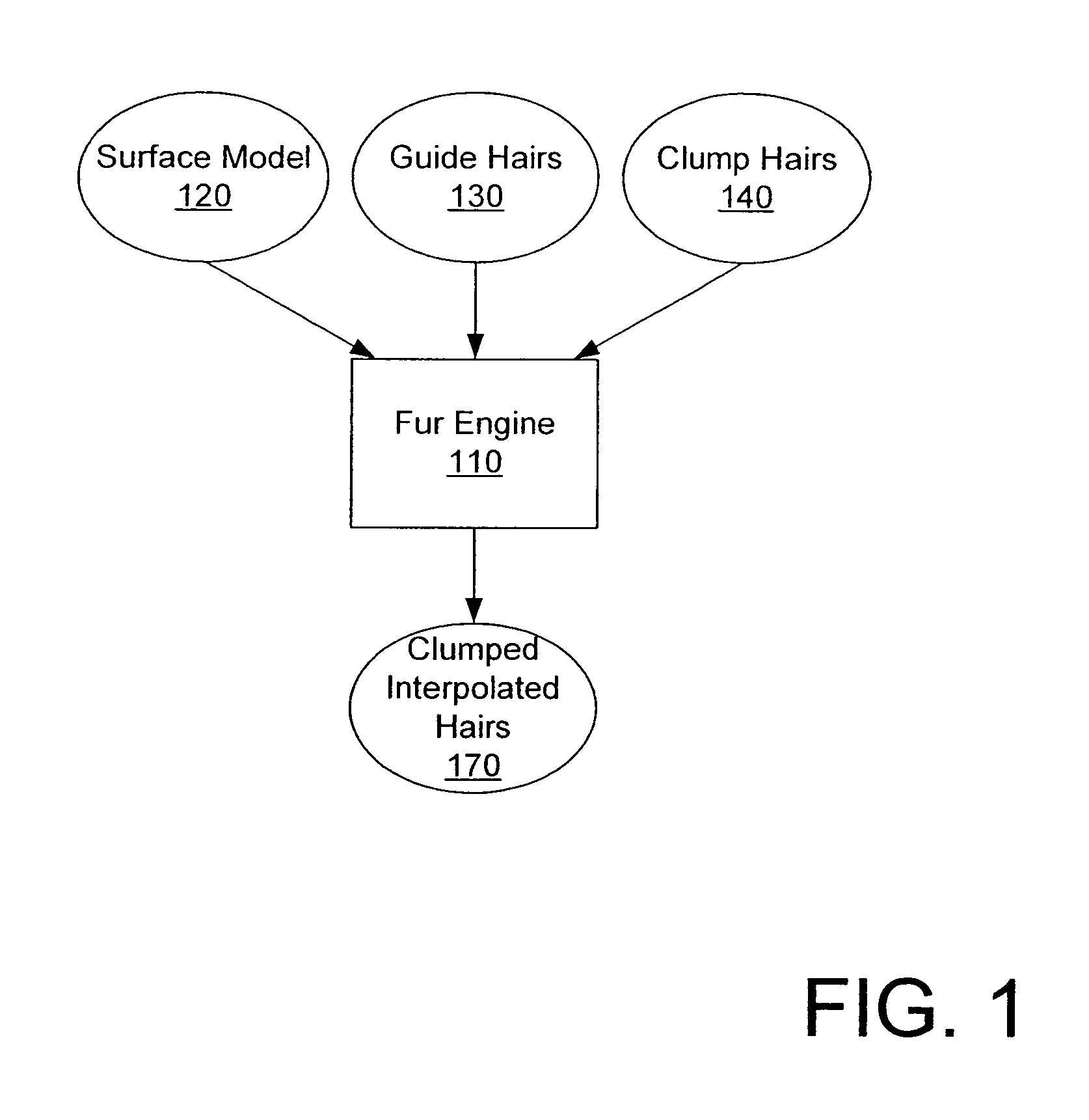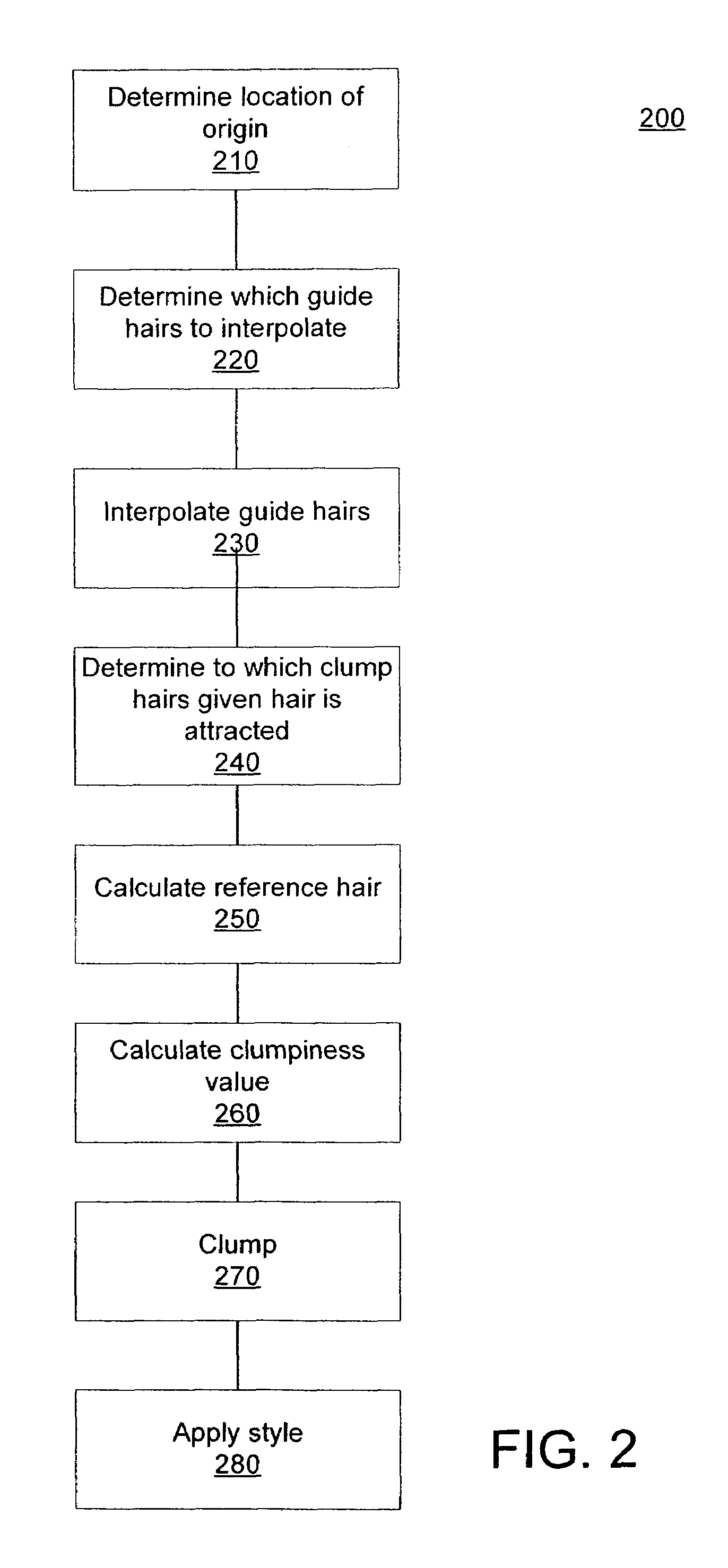Modeling hair using interpolation and clumping in an iterative process
a technology of interpolation and clumping, applied in the field of computer graphics, can solve the problems of difficult to model hair and fur, and difficult to create and position hair and fur,
- Summary
- Abstract
- Description
- Claims
- Application Information
AI Technical Summary
Problems solved by technology
Method used
Image
Examples
Embodiment Construction
[0023]For simplicity purposes, the invention is described in the context of modeling hairs on a human head. However, the invention may be used to model any tubular structures protruding from a surface, such as strands of fur protruding from an animal's skin, strands of fibers protruding from a carpet, and blades of grass or stems of plants protruding from the ground. For purposes of generality, the terms “strand” and “hair” are used herein interchangeably and include hair, fur, grass, stems, fibers, and any similar tubular structures protruding from a surface.
[0024]FIG. 1 illustrates a block diagram overview of the use of one embodiment of a software component for modeling hair. FIG. 1 includes a fur engine 110, a surface model 120, guide hairs 130, clump hairs 140, and clumped interpolated hairs 170. Fur engine 110 is a software component used to model hair. The inputs of the fur engine 110 are a surface model 120, one or more guide hairs 130, and one or more clump hairs 140. The o...
PUM
 Login to View More
Login to View More Abstract
Description
Claims
Application Information
 Login to View More
Login to View More - R&D
- Intellectual Property
- Life Sciences
- Materials
- Tech Scout
- Unparalleled Data Quality
- Higher Quality Content
- 60% Fewer Hallucinations
Browse by: Latest US Patents, China's latest patents, Technical Efficacy Thesaurus, Application Domain, Technology Topic, Popular Technical Reports.
© 2025 PatSnap. All rights reserved.Legal|Privacy policy|Modern Slavery Act Transparency Statement|Sitemap|About US| Contact US: help@patsnap.com



